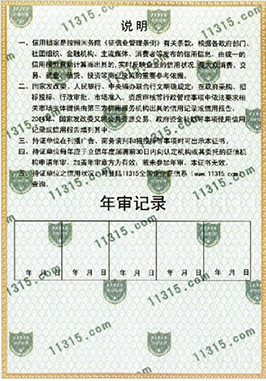- Arabic
- French
- Russian
- Spanish
- Portuguese
- Turkish
- Armenian
- English
- Albanian
- Amharic
- Azerbaijani
- Basque
- Belarusian
- Bengali
- Bosnian
- Bulgarian
- Catalan
- Cebuano
- Corsican
- Croatian
- Czech
- Danish
- Dutch
- Afrikaans
- Esperanto
- Estonian
- Finnish
- Frisian
- Galician
- Georgian
- German
- Greek
- Gujarati
- Haitian Creole
- hausa
- hawaiian
- Hebrew
- Hindi
- Miao
- Hungarian
- Icelandic
- igbo
- Indonesian
- irish
- Italian
- Japanese
- Javanese
- Kannada
- kazakh
- Khmer
- Rwandese
- Korean
- Kurdish
- Kyrgyz
- Lao
- Latin
- Latvian
- Lithuanian
- Luxembourgish
- Macedonian
- Malgashi
- Malay
- Malayalam
- Maltese
- Maori
- Marathi
- Mongolian
- Myanmar
- Nepali
- Norwegian
- Norwegian
- Occitan
- Pashto
- Persian
- Polish
- Punjabi
- Romanian
- Samoan
- Scottish Gaelic
- Serbian
- Sesotho
- Shona
- Sindhi
- Sinhala
- Slovak
- Slovenian
- Somali
- Sundanese
- Swahili
- Swedish
- Tagalog
- Tajik
- Tamil
- Tatar
- Telugu
- Thai
- Turkmen
- Ukrainian
- Urdu
- Uighur
- Uzbek
- Vietnamese
- Welsh
- Bantu
- Yiddish
- Yoruba
- Zulu
11월 . 28, 2024 02:06 Back to list
Understanding the Importance of Your Car's Engine Timing Belt Maintenance
Understanding Car Engine Timing Belts Importance, Function, and Maintenance
The timing belt is a critical component of a car engine, often overlooked by drivers until it causes a problem. This crucial part plays a vital role in the engine’s performance, and understanding how it works and how to maintain it can help prevent costly repairs and ensure the longevity of the vehicle.
What is a Timing Belt?
The timing belt is a rubber belt that connects the crankshaft to the camshaft in an internal combustion engine. Its primary function is to synchronize the rotation of the crankshaft and the camshaft, ensuring that the engine’s valves open and close at the proper times during each cylinder’s intake and exhaust strokes. This precise timing is necessary for optimal engine performance and efficiency.
Most modern engines use a timing belt, but some still use a timing chain, which serves a similar purpose. Timing belts are typically quieter and lighter than chains, but they have limitations in terms of lifespan and durability.
Why is the Timing Belt Important?
The importance of the timing belt cannot be overstated. If it fails or skips a tooth, it can lead to severe engine damage, including bent valves or damaged pistons. This kind of failure can result in expensive repairs and may even necessitate an engine replacement. The timing belt also affects the overall performance of the engine, impacting horsepower, fuel efficiency, and emission levels.
Signs of a Failing Timing Belt
It is essential for vehicle owners to be able to identify the symptoms of a failing timing belt
. Common signs includecar engine timing belt

1. Engine Misfiring If the timing belt is worn or stretched, it may cause the engine to misfire due to improper timing. 2. Unusual Noises A failing timing belt can produce a ticking or slapping noise, indicating that it is loose or has broken.
3. Oil Leaks An oil leak around the front of the engine could be a sign that the timing belt cover has failed.
4. Check Engine Light The illumination of this light could indicate various issues, including timing belt problems.
If any of these signs occur, it is imperative to have the vehicle inspected by a qualified mechanic immediately.
Maintenance and Replacement
Timing belts are subject to wear and tear, and they typically have a lifespan of 60,000 to 100,000 miles, depending on the vehicle and driving conditions. Regular maintenance is crucial to ensure that the timing belt functions properly.
Car manufacturers usually provide recommended intervals for timing belt replacement in the owner’s manual. It is essential to follow these guidelines rather than waiting for noticeable symptoms. Replacement is often performed alongside other components like the water pump, tensioners, and pulleys to ensure a comprehensive repair and to save on labor costs.
Conclusion
In summary, the timing belt is an integral part of a vehicle’s engine, playing a critical role in its performance and reliability. Neglecting the maintenance of the timing belt can lead to severe engine issues and costly repairs. Understanding its function, being aware of the signs of failure, and adhering to the recommended replacement intervals will help vehicle owners prolong the life of their engines. By prioritizing the upkeep of the timing belt, drivers can ensure smoother engine operation and minimize the risk of unexpected breakdowns. Remember, when it comes to car maintenance, it’s always better to be proactive rather than reactive.
-
Korean Auto Parts Timing Belt 24312-37500 For Hyundai/Kia
NewsMar.07,2025
-
7PK2300 90916-T2024 RIBBED BELT POLY V BELT PK BELT
NewsMar.07,2025
-
Chinese Auto Belt Factory 310-2M-22 For BMW/Mercedes-Benz
NewsMar.07,2025
-
Chinese Auto Belt Factory 310-2M-22 For BMW/Mercedes-Benz
NewsMar.07,2025
-
90916-02660 PK Belt 6PK1680 For Toyota
NewsMar.07,2025
-
drive belt serpentine belt
NewsMar.07,2025

